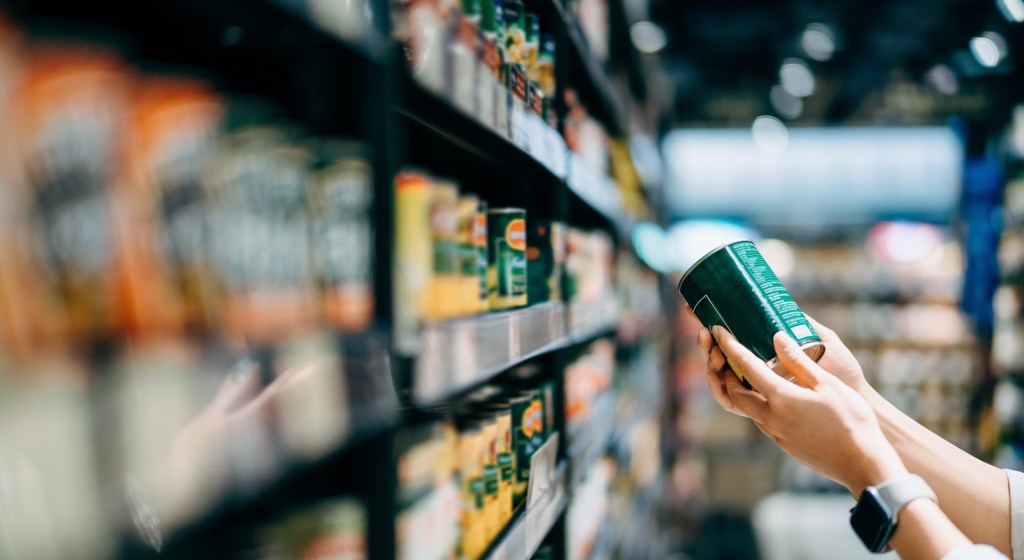Building an emotional connection with consumers
Omnichannel shoppers take their research seriously; they search for relevant attribute keywords online, educate themselves on ingredients and materials, engage with brands on social media to discover products, investigate product reviews, and dive deep into finding products and brands that align with their values.
A brand’s job–among many other things–is to make it easier for omnichannel shoppers to find their products with the attributes they care about. By leveraging omnichannel data, attribute data, and demographic insights, brands can learn so much about omnichannel shopper preferences including which product attributes are their most effective sales drivers and why and where shoppers are buying their products.
Different product attributes can also have different impacts on sales, whether online or in-store, as well as among omnichannel shoppers. Our whitepaper eBook, Is your brand listening to the conscious consumer, examines the attributes that are trending among consumers and how CPG brands can leverage omnichannel insights to get on the radar of (or stay on the radar of) those shoppers.
Conscious consumers drive long-term growth for brands.
The rise of the conscious consumer has shown that more are now thinking about the power of their shopping dollars and the impact those dollars can make. They want products that are good for the planet’s health and the health of communities around them. And those decisions are reflected in their purchase choices on the digital and physical shelves.
In 2021, sales dollars of products with an attribute claiming to be “Plastic Free” increased by 96.4% compared to two years prior, per NielsenIQ data. Products claiming to use “Eco-Friendly Packaging” also saw sales increase by 1.3%, while products made from “100% Recycled Paperboard” were up by 8.1% for the same period.1
Brands can leverage data to understand how important better-for-the-earth packaging and products are to their customers.
Retailers also want their CPG partners to be sustainable and environmentally responsible and to help them achieve specific ESG goals such as reducing carbon emissions, improving recycling options, and limiting waste.
Companies that are willing to improve in areas like sourcing and recycling will find it much easier to build better relationships with both conscious consumers and environmentally focused retailers; attribute claims such as “cruelty-free,” “cage-free,” and “fair trade” are all popular, and shoppers will go to great lengths to find what they want when making brand choices.
Conscious consumers = Omnichannel shoppers
Conscious consumers are omnichannel shoppers by nature–and brands need omnichannel data to understand those shoppers’ needs and behaviors. Some customers might prefer to buy organic products in-store but prefer purchasing plastic-free products in both online and brick-and-mortar stores. When brands can pinpoint exactly what consumers care about when it comes to their favorite products, they can highlight those attributes and present them to the right customers in the right channels.
On-pack claims and shelf tag QR codes are both helpful ways to educate customers about a product’s sourcing and origins in brick-and-mortar stores. But consumers also search online to learn about the brands they buy from. Nearly 20% of consumers use the internet to learn about a company’s sustainability practices, more than a third use it to find out how ingredients are sourced, and 16% go online to learn about a company’s labor practices, according to a joint report from NielsenIQ and FMI.2
That means a brand’s online presence and attribute matching on the digital shelf matter to consumers just as much as accurate on-pack labeling
How to reach conscious consumers
In today’s climate, brands must be able to target key customer groups with the product attributes they’re searching for, especially in competitive categories like health, wellness, and sustainability. Leveraging sales data with accessible reporting and analytics tools enables brands to uncover insights about their customers, such as what they’re buying, and where, when, and why they buy it.
Download our whitepaper ebook, Is your brand listening to the conscious consumer, to learn how NielsenIQ products can track trending product attributes and help brands connect with the ever more powerful conscious consumer.
Sources
1 NielsenIQ Retail Measurement Services, NielsenIQ Product Insight, powered by Label Insight, Total Store; Total US xAOC; year end 2021 – 52 weeks W/E 01/01/22 vs 2YA
2 FMI/NIQ Transparency in an Evolving Omnichannel World Report 2022





